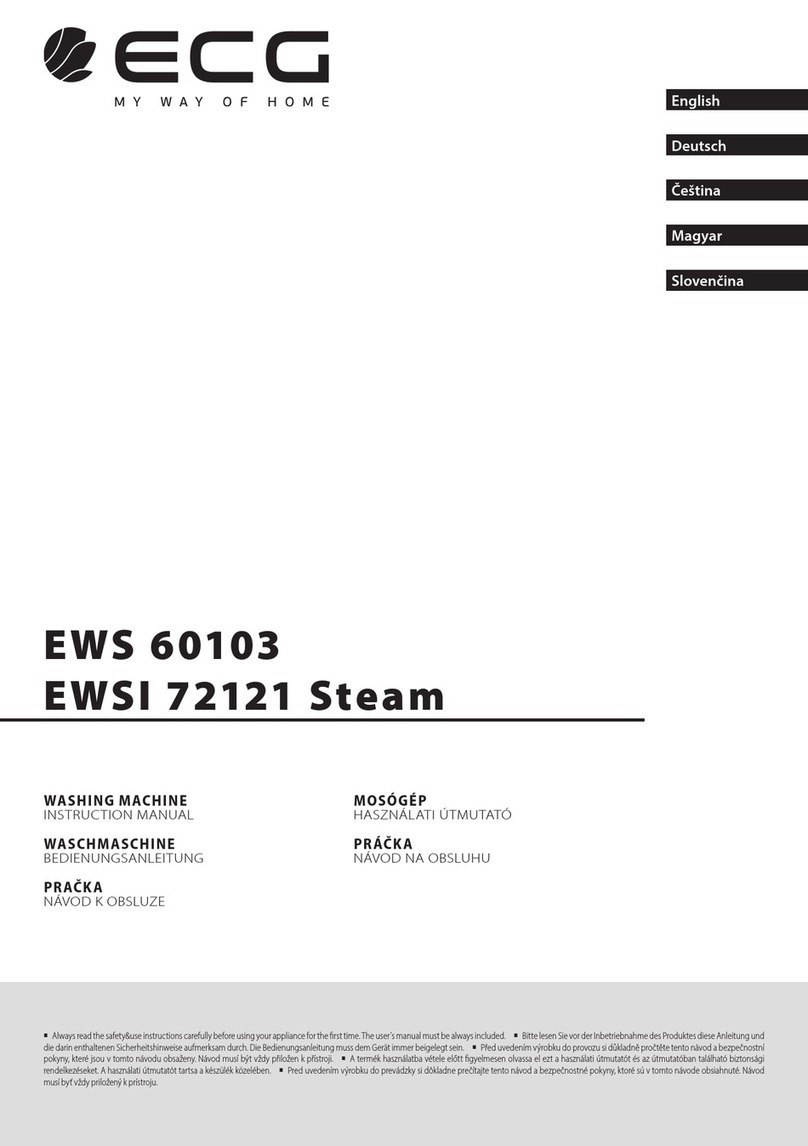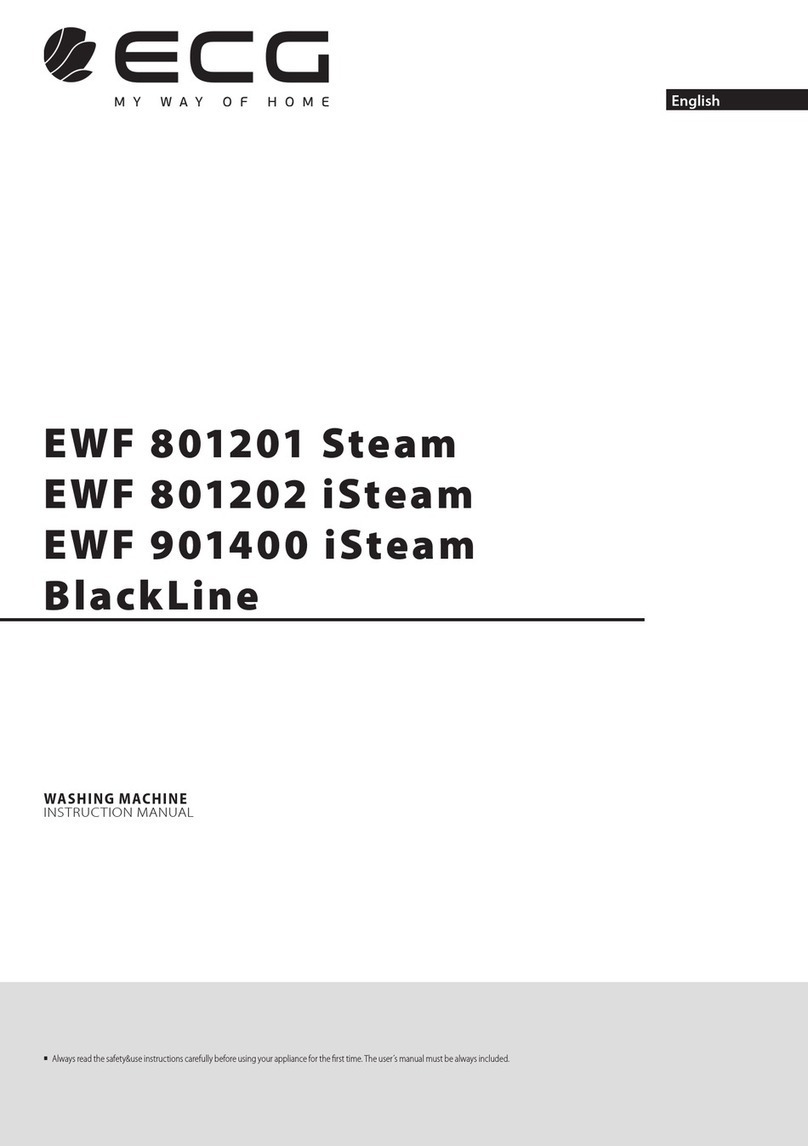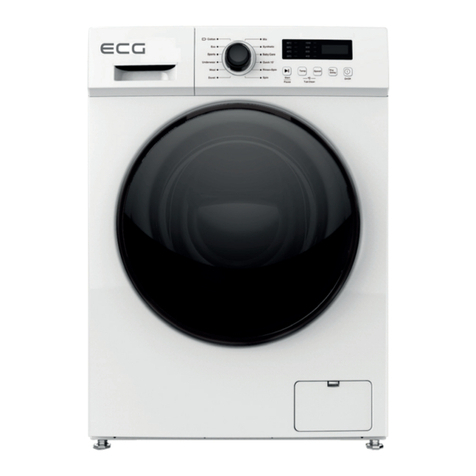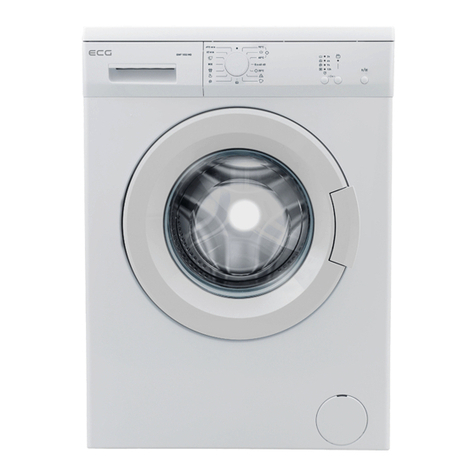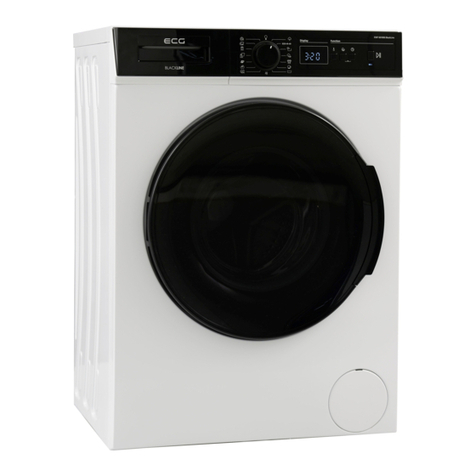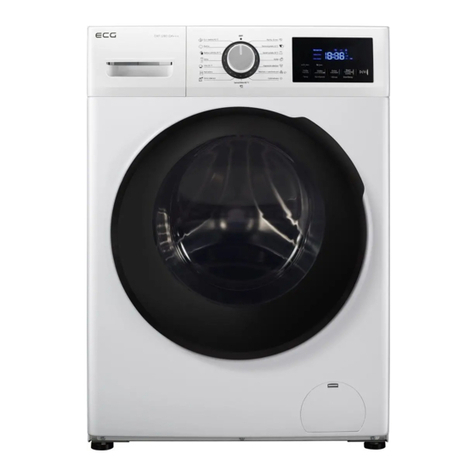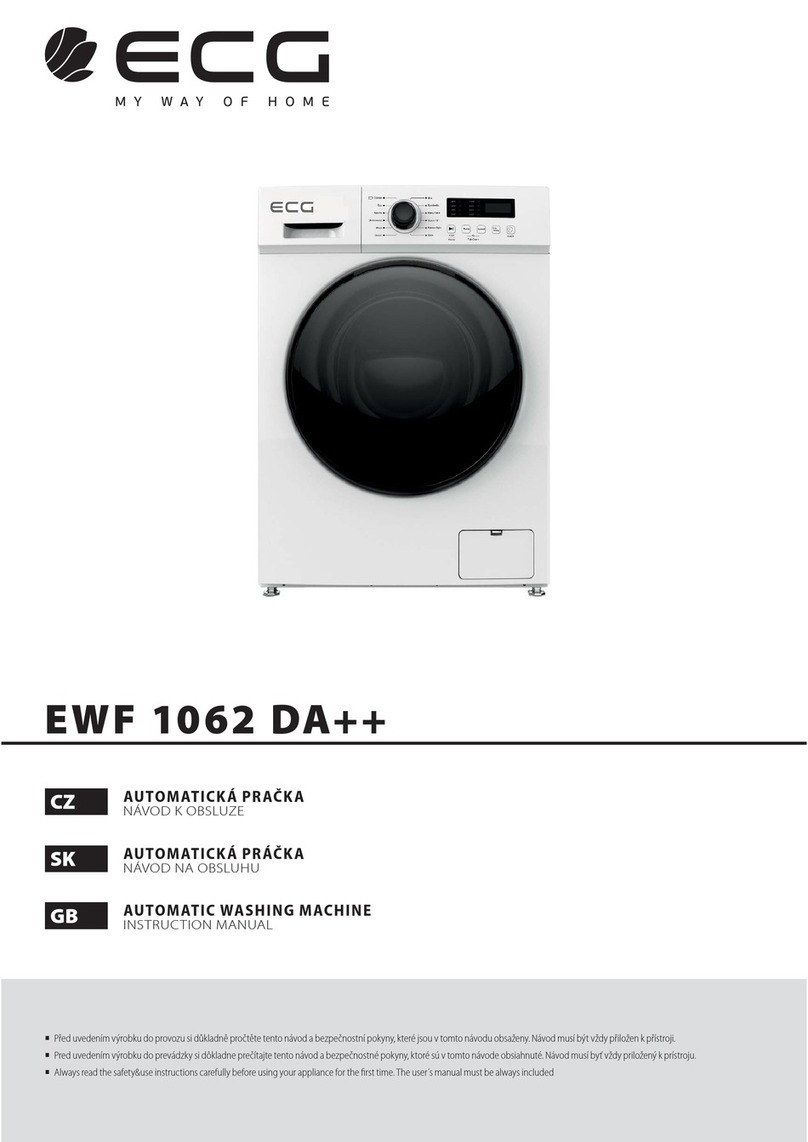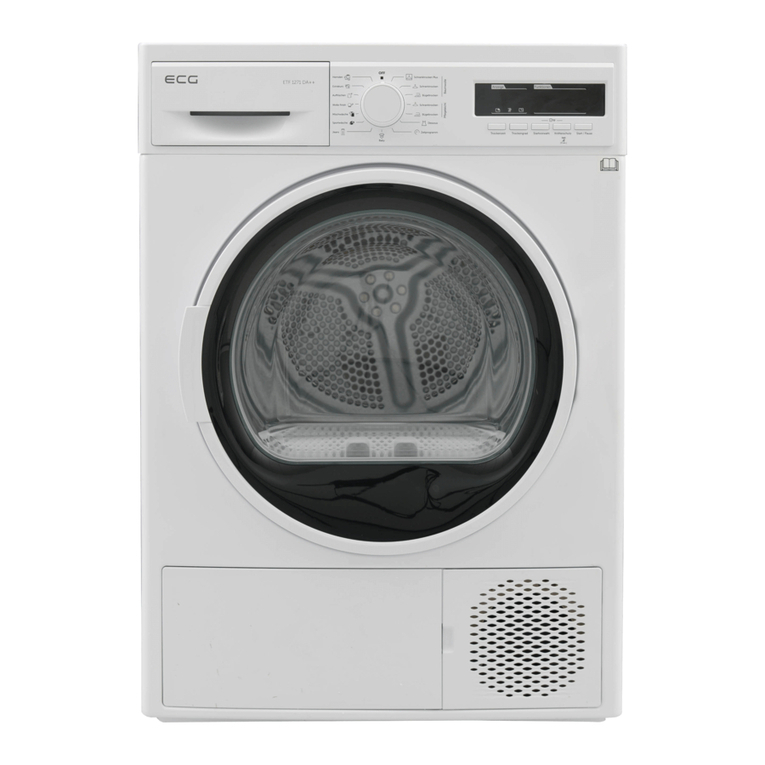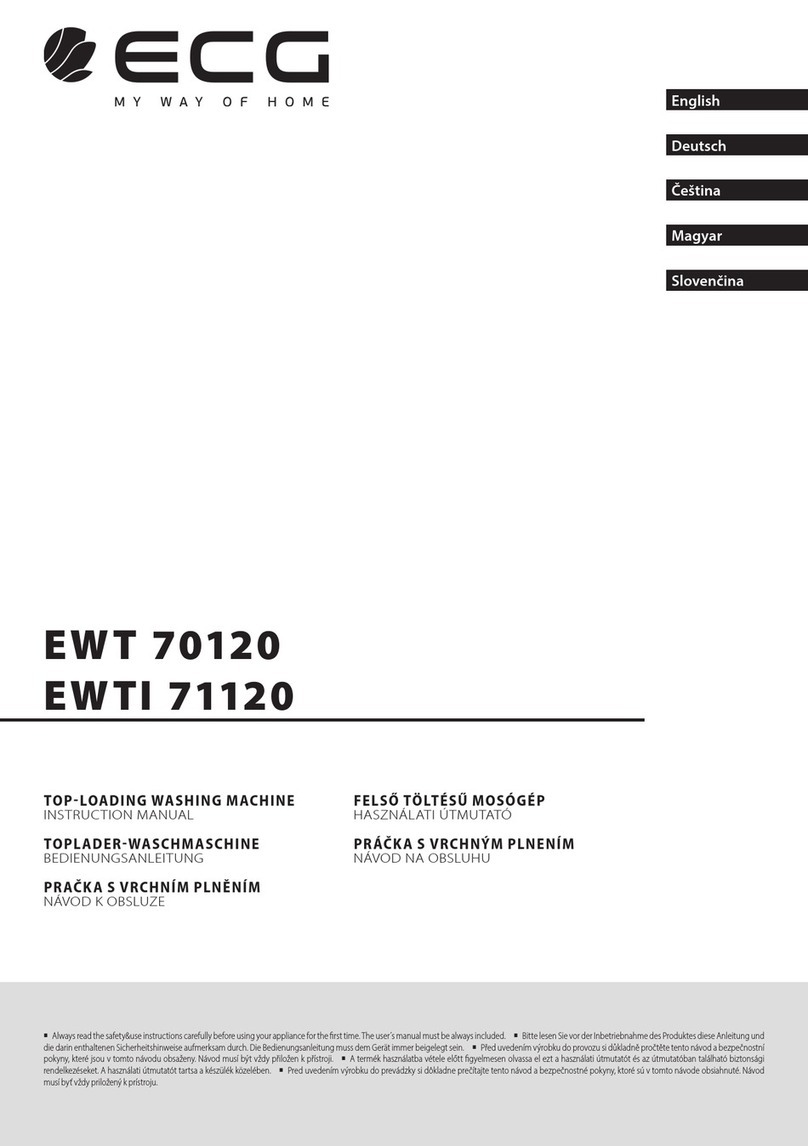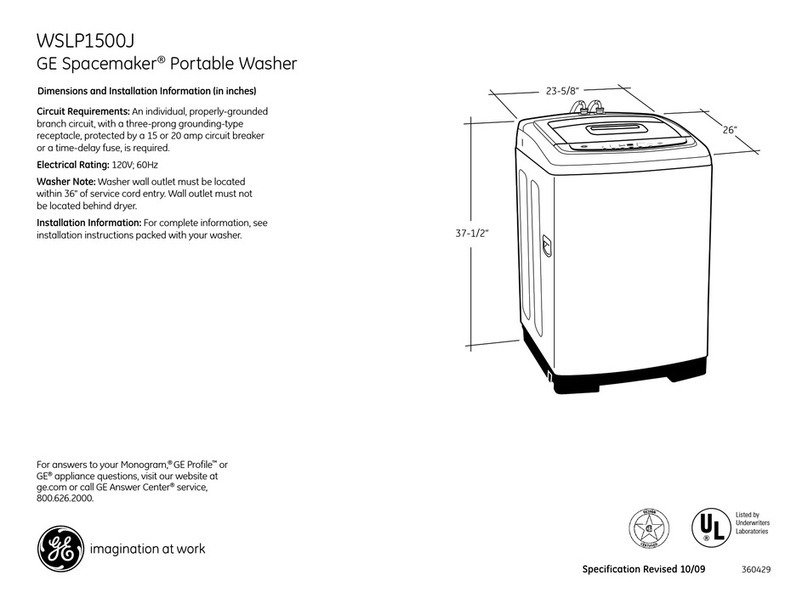
English
English
6
• Install the washing machine in a well ventilated area with adequate air circulation. Place the appliance so
that it can fully open the washing machine door.
• The washing machine is not intended as a built-in or for integration into furniture sets.
• The ideal ambient temperature for the washing machine operation is 15°C to 25°C.
• Frozen hoses can rot and break. In areas where the temperature drops below freezing, the temperature
may jeopardize the safe operation of electronic circuits.
• We recommend that the rst washing cycle be undergone without laundry for„90° white cotton“ so that
you pour in the second compartment of the detergent drawer ½ measuring cup of detergent.
• Since long term contact with air can lead to deposition of detergent or fabric softener, pour the detergent
and fabric softener into the compartment until just before the intended wash.
• We recommend to use the prewash program only for a heavily soiled laundry.
• The amount of laundry loaded into the washing machine must not exceed the maximum permitted
amount. Otherwise, the washing machine will run in the safe mode.
• Use the washing machine only for laundry that is labelled by the manufacturer as suitable for machine
washing.
• When using fabric softener and similar products in your machine, follow the manufacturer's
recommendations for detergent/fabric softener.
• Make sure that there are no foreign objects in the pockets of the laundry pieces put in the washing
machine (nails, needles, coins, lighters, matches, clips, etc). These foreign objects could damage the
washing machine.
• Washing very dusty clothing damages your washing machine. Shake heavily dusty clothing before placing
it in the washing machine.
• Never open the detergent drawer while the machine is running.
• Never force open the door of the washing machine while it is running.
• Before opening the door, make sure that no water remains in the drum. Do not open the washing machine
door if you see water.
• At the end of the program, wait at least 2 minutes and then open the door.
• Sulphur in decolourants may cause corrosion. Therefore never use decolourants in the washing machine.
Never use substances containing solvents (e.g. benzine) in the washing machine.
• If you are not using the washing machine for longer time, unplug it, close the water supply and leave the
door open. The interior of your machine will stay dry and free of odours.
• After testing at the end of the manufacturing process in the machine might remain a small amount of
water, which does not constitute a risk of damage to your machine.
Danger of ooding
• Use a new set of hoses included with the appliance.
• Do not reuse the old hoses set.
• Always disconnect the appliance from the power supply and turn o the water supply after use.
• Do not place the drain hose of your washing machine in a sink or bucket or washbasin.
Danger of fall or injury
• Do not step or sit on the washing machine. The top plate could break and you could injure yourself.
• Do not lean on the door. Do not force it closed. If it is dicult to close the door, make sure that there are
not too many clothes in the washing machine or that they are well distributed.
• Arrange safely the hoses and power cable after installation. Trip and fall could cause injuries.
• Do not turn the washing machine upside down or on its side.
• Do not lift the washing machine by its protruding parts (detergent drawer, door). They could be damaged
and cause injury.
• Handling the washing machine requires cooperation of at least two people.
